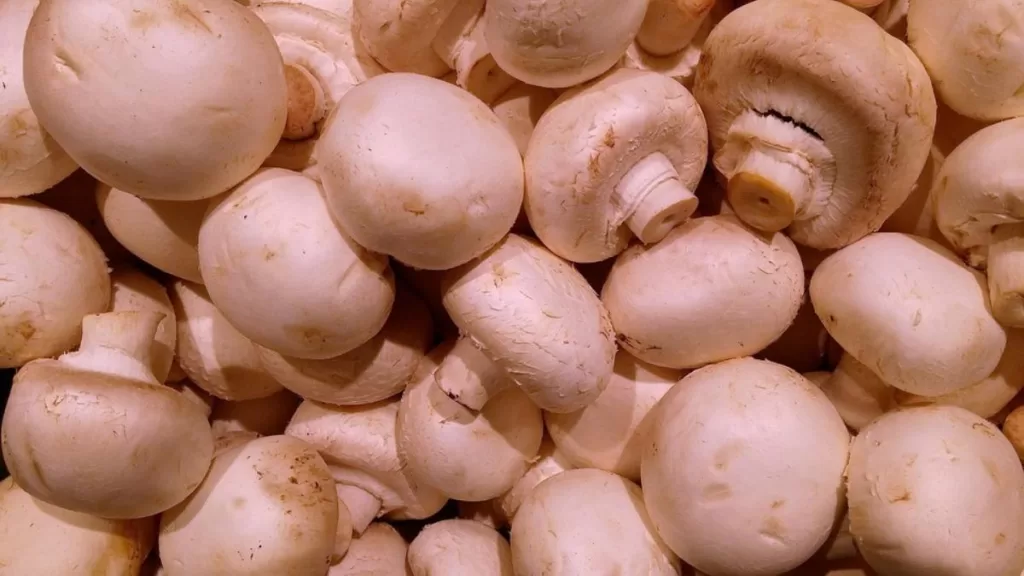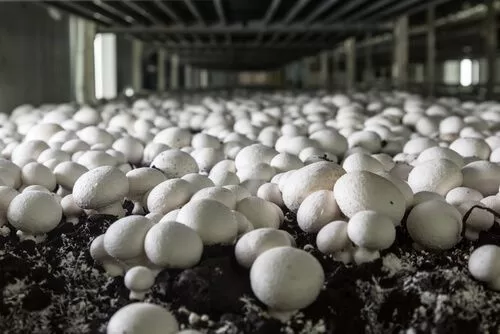Yes, you can cultivate mushrooms at home! It’s a fun and rewarding hobby that requires little equipment and takes up little space. Growing mushrooms at home takes some time and attention to detail, but with the right conditions, you can successfully grow a wide range of edible and medicinal mushrooms.
Before you begin, select a mushroom species to grow and gather the necessary materials and equipment, including spores, a substrate, containers, humidity, temperature, light, and air circulation. There are numerous online resources that can assist you in getting started, such as detailed instructions, videos, and forums where you can ask questions and share tips with other mushroom growers.
Table of Contents

Growing mushrooms at home requires the following materials and conditions
- Mushroom spores or spores: You can purchase spores from a reputable supplier, or use spores from a previous crop.
- Substrate: Common substrates include straw, sawdust, or a mixture of the two. The substrate should be sterilized to prevent contamination.
- Containers: You can grow mushrooms in a variety of containers, such as plastic bags, jars, or trays.
- Humidity: Mushrooms need high humidity to grow. This can be achieved by covering the containers with plastic wrap, using a humidifier, or placing the containers in a location with high humidity.
- Temperature: The ideal temperature range for growing mushrooms is between 55 and 60°F.
- Light: Mushrooms do not require direct sunlight, but they do need some light to grow. A location with indirect light, such as a basement or closet, is ideal.
- Air circulation: Good air circulation is important to prevent the growth of mold and bacteria. A fan can be used to circulate air around the containers.
By following these guidelines, you can grow a variety of edible and medicinal mushrooms in your home, including shiitake, oyster, and reishi.
What are the requirements to grow mushroom?
Growing mushrooms requires a controlled environment with specific conditions, including:
The substrate is the material that the mushrooms will grow on. Straw, sawdust, or a combination of the two are common substrates. To avoid contamination, the substrate should be sterilised.
Spores or spawn: Spores or spawn can be purchased from a reputable supplier, or you can use fragments from a previous crop.
Mushrooms can be grown in a variety of containers, including plastic bags, jars, and trays.
Mushrooms require high humidity to grow, typically between 80-90%. This can be accomplished by wrapping the containers in plastic wrap, using a humidifier, or placing them in a humid environment.
Temperature: The ideal temperature range for mushroom cultivation is between 55 and 60°F. Mushrooms do not require direct sunlight to grow, but they do require some light. An indirect light source, such as a basement or closet, is ideal.
Air circulation is essential for preventing the growth of mould and bacteria. To circulate air around the containers, a fan can be used.
You can successfully grow a variety of edible and medicinal mushrooms in your home by creating and maintaining the right conditions, including shiitake, oyster, and reishi.

Is mushroom farming easy?
Mushroom farming can be easy or difficult depending on various factors such as the type of mushroom you want to grow, the resources and equipment you have available, and your level of experience and knowledge about mushroom cultivation.
If you are just starting out, growing oyster mushrooms or shiitake mushrooms can be relatively easy as they have a short growing cycle, are less picky about the growing conditions, and have fewer issues with pests and diseases. However, growing other types of mushrooms, such as morels or truffles, can be more challenging as they have more demanding growing conditions and a longer growing cycle.
A good understanding of the cultivation process, proper growing conditions, proper hygiene and sanitation practises, and a reliable source of spores or spawn are all required for successful mushroom farming. It also necessitates the use of appropriate equipment, such as a grow room or growing containers, substrate for growing, and monitoring equipment for temperature, humidity, and air flow.
Overall, mushroom farming can be a rewarding experience if you have a desire to learn and experiment, but it can also be a challenging and demanding process if you are not fully prepared.
What is the easiest mushroom to grow?
The easiest mushrooms to grow are typically oyster mushrooms and shiitake mushrooms. These mushrooms have a short growing cycle, are less demanding in terms of growing conditions, and have fewer issues with pests and diseases compared to other types of mushrooms.
Oyster mushrooms can be grown on a variety of substrates, including straw, sawdust, and coffee grounds, and they thrive in relatively high temperatures and humidity levels. Shiitake mushrooms have a short growing cycle and can be grown on logs or sawdust blocks, but they require a little more attention in terms of temperature, humidity, and light conditions.
In general, oyster and shiitake mushrooms are a good choice for beginners because they are relatively easy to grow, are fast-growing, and have a good yield. However, it’s important to note that growing any type of mushroom requires some level of knowledge, experience, and attention to detail, so it’s always important to do your research and learn as much as you can about the cultivation process before you start growing.

Is it OK to grow mushrooms in your house?
Yes, growing mushrooms in your house is generally safe as long as proper growing conditions are maintained. There are many different types of mushrooms that can be grown indoors, and each has its own specific requirements for temperature, humidity, light, and growing medium. If you are interested in growing mushrooms at home, it’s important to do some research and learn about the specific type of mushroom you want to grow and how to meet its growing requirements.
It’s also important to be mindful of food safety and to avoid consuming any mushrooms that are not properly identified, as some types of mushrooms can be toxic. If you’re not confident in your ability to identify edible mushrooms, it’s best to buy them from a reputable source.
What are the 5 steps of growing mushrooms?
The steps for growing mushrooms vary depending on the type of mushroom, but in general, the process consists of the five steps listed below:
Choosing the right spores: Select spores from a healthy, mature mushroom to ensure that the spores are free of disease and pests.
The growing medium provides a supportive environment for the mushrooms to grow. Depending on the type of mushroom being grown, the medium can be made from a variety of materials such as sawdust, straw, or compost.
Sterilizing the growing medium: The growing medium must be sterilised to eliminate any bacteria, fungi, or other unwanted microorganisms that may compete for nutrients with the mushroom spores.
Inoculating the growing medium: After sterilising the growing medium, the mushroom fragments are added to it. This is referred to as inoculating the medium. The fragments will begin to grow into mycelium, which will produce mushrooms in the end.
Mushroom care: Once the mycelium has established itself in the growing medium, the mushrooms can begin to grow. To ensure optimal growth, temperature, humidity, and light levels must be carefully monitored. Once fully developed, the mushrooms can be harvested and either consumed or used for future inoculations.
It’s important to note that each type of mushroom has different growing requirements, so make sure to do your research and follow the instructions for that specific species.
Can you grow mushrooms in just soil?
Yes, you can grow mushrooms in soil, but it is not the most common growing medium for mushrooms. Soil is a relatively nutrient-rich environment, which can make mushroom cultivation more difficult because the mushroom mycelium must compete for resources with other microorganisms. Certain types of mushrooms, particularly wild mushrooms like shiitake, maitake, and oyster mushrooms, can be grown in soil.
Growing mushrooms in soil requires the use of high-quality, well-draining soil that is free of chemicals and other contaminants. You can also enrich the soil with organic matter, such as compost or well-rotted manure, to provide additional nutrients for the mushrooms.
To grow mushrooms in soil, you must first make spawn, which is a mixture of mushroom mycelium and a growing medium. To protect it from light and regulate moisture levels, the spawn can be mixed into the soil and then covered with a layer of mulch. Mycelium will have established itself in the soil and will begin to produce mushrooms after a few weeks.
Growing mushrooms in soil can be difficult, but with proper preparation and care, it can be a rewarding experience.
Which type of mushroom is in demand?
The demand for various types of mushrooms can vary depending on location and market. However, some of the most popular mushrooms worldwide include:
Shiitake: Shiitake is a flavorful, meaty mushroom popular in Asian cuisine for its savoury, umami flavour.
Oyster mushrooms are prized for their delicate, mild flavour and versatility in the kitchen. They can be used to make stir-fries, soups, and stews, among other things.
Portobello mushrooms are a popular vegetarian substitute for meat in many dishes due to their rich, meaty flavour and hearty texture.
Crimini mushrooms have a rich, earthy flavour and are a type of brown button mushroom. They’re frequently found in soups, stews, and pasta dishes.
Enoki: Enoki mushrooms are a delicate, crunchy mushroom that is frequently used in Asian cuisine, especially soups and salads.
In addition to these popular types of mushrooms, specialty and exotic mushrooms such as morels, chanterelles, and truffles are in high demand. These mushrooms are prized for their distinct flavours and textures, and they are frequently used in haute cuisine.
It’s important to note that demand for mushrooms can vary depending on the region and the specific market. To determine the most in-demand mushrooms in your area, you may want to consult with local growers, chefs, or specialty food retailers.
Which mushroom is very profitable?
There are several mushrooms that are considered profitable, depending on factors such as market demand, growing conditions, and cultivation methods. Some popular edible mushrooms that are known to be profitable include:
- Shiitake: One of the most popular and widely cultivated edible mushrooms, shiitake mushrooms are highly prized for their meaty texture and rich, earthy flavor.
- Oyster: Oyster mushrooms are fast-growing and easy to cultivate, making them a popular choice among growers. They are also highly versatile in cooking and have a mild, slightly sweet flavor.
- Lion’s mane: This mushroom is also known for its meaty texture and is becoming increasingly popular as a meat alternative for vegans and vegetarians.
- Maitake: Maitake mushrooms are also known for their meaty texture and are used in a variety of cuisines, including Japanese and Chinese. They are also valued for their health benefits, including their ability to boost the immune system.
- Morel: Morels are highly sought after for their distinctive nutty flavor and are considered a delicacy by many gourmet cooks. They are also relatively rare in the wild, making them a profitable crop for cultivators.
It’s important to note that profitability can vary depending on many factors, such as local market conditions, cost of production, and competition. Growers should carefully research the market and growing conditions before investing in mushroom cultivation.






